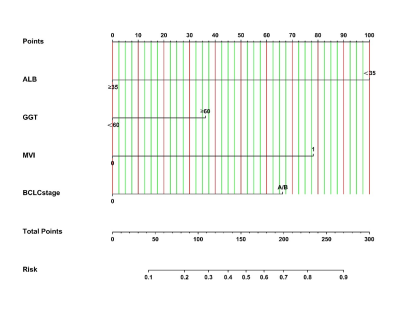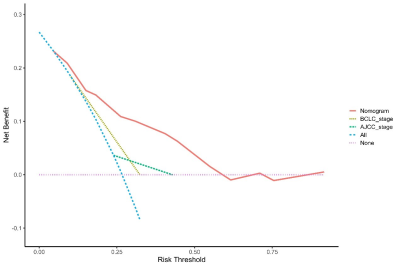Meng Yan1, Xinming Li1, Zhijun Geng2, Zhendong Qi1, Yingjie Mei3, and Xianyue Quan1
1Department of Radiology, Zhujiang Hospital, Southern Medical University, Guangzhou, China, 2Department of Medical Imaging,Sun Yat-sen University Cancer Center, Guangzhou, China, 3Philips Healthcare, Guangzhou, China
1Department of Radiology, Zhujiang Hospital, Southern Medical University, Guangzhou, China, 2Department of Medical Imaging,Sun Yat-sen University Cancer Center, Guangzhou, China, 3Philips Healthcare, Guangzhou, China
This study developed and validates of a nomogram based on Gd-EOB-DTPA-enhanced MRI to predict early
recurrence of hepatocellular carcinoma after curative resection.

Figure
1. Nomogram, including
ALB, GGT, MVI (microvascular invasion), and BCLC stage, to predict early
recurrence (ER) in patients with hepatocellular carcinoma after curative
resection. The nomogram can help obtain the probability of ER (≤2
years) by adding up the points identified on the points scale for each
variable.
